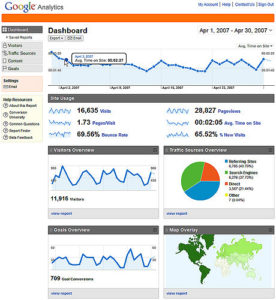
Business Intelligence (BI) plays a key role in the strategic planning process of corporate businesses. These intelligent systems help companies analyze data in order to make smarter decisions. These systems summarize important business factors such as customer profiling, market segmentation, and other types of statistical analysis related to business factors. Large companies collect large amounts of data and this creates a need for sophisticated software systems. Microsoft Excel is a good starting point although primitive in relation to database structures. Although Excel may be structured the same as database tables, databases provide a means of correlating the data across tables. A table in database language is similar to an excel spreadsheet. Not an excel file, but an excel spreadsheet. An excel file can have multiple spreadsheets within one excel file. Therefore, the same way that a database has tables, an excel file has spreadsheets. Retrieval and organization of the data is where software systems start playing a role. Intelligent software systems must be able to access data efficiently and in a timely manner. Efficiency is derived from having an organized system. A structure or exo-skeleton is crucial in maintaining organization of data across business processes. Enterprise application architecture is a cross functional system of enterprise applications and their interrelationships. From this structure companies implement ERP. ERP is Enterprise Resource Planning. Figure 1 below shows a structure or flowchart of how data moves from the customer, employee, partner, and supplier. All avenues lead to the Enterprise Resource Planning core known as the internal business processes. “Managing the full range of the customer relationship involves two related objectives: one, to provide the organization and all of its customer-facing employees with a single, complete view of every customer at every touchpoint and across all channels; and, two, to provide the customer with a single, complete view of the company and its extended channels” (2009, O’Brien & Marakas, p.174).
The reason for “business intelligence” is to boost revenue, improve customer service, and control costs by making faster and better decisions. There are several business intelligence trends going on right now and companies are looking closely at adoption of these trends into their business process. The different components of business intelligence such as dashboards, cloud technology, collaboration and social networking, and mobile apps are one piece of the entire business intelligence system. Business Intelligence consists of more than one system all working together to achieve a systematic process that saves time and money. Business intelligence software companies are striving to put together systems that are becoming more and more concentrated to the needs of businesses. The problem is that every business has different needs so the complexity of one all encompassing software system becomes a complicated system that holds a steep learning curve in order to implement. In any case, we still see these strives being made and systems are not only becoming more and more functional, but they are also becoming more and more integrated with the processes within their self as well as the accumulation of data across different companies and platforms.
 Dashboards are a pivotal piece of the business intelligence system. A dashboard pulls specific user chosen data directly to one system and displays it according to the users choice. It also has the ability to pull data from different systems and run analysis across the multiple data sources in order to give insight to deeper analysis. Dashboards are one method of providing real-time custom configured data to managers. Access to data alone is not helpful. Managers need specific data and need the ability to focus on the right metrics. Dashboards provide this ability through what is called in-memory processing. This is the ability to mash together their own data through their dashboard.
Dashboards are a pivotal piece of the business intelligence system. A dashboard pulls specific user chosen data directly to one system and displays it according to the users choice. It also has the ability to pull data from different systems and run analysis across the multiple data sources in order to give insight to deeper analysis. Dashboards are one method of providing real-time custom configured data to managers. Access to data alone is not helpful. Managers need specific data and need the ability to focus on the right metrics. Dashboards provide this ability through what is called in-memory processing. This is the ability to mash together their own data through their dashboard.
 Cloud technology is gaining a lot of popularity but not a lot of deployments (Howson, C., 2013). Business intelligence in the cloud provides the ability to outsource infrastructure maintenance, provide easy scaling, and steer focus toward high-value IT investments. The greatest concerns about deploying to cloud technology have been security concerns. There has always been a doubt in the past about whether cloud services can provide the level of security needed by large companies with sensitive data.
Cloud technology is gaining a lot of popularity but not a lot of deployments (Howson, C., 2013). Business intelligence in the cloud provides the ability to outsource infrastructure maintenance, provide easy scaling, and steer focus toward high-value IT investments. The greatest concerns about deploying to cloud technology have been security concerns. There has always been a doubt in the past about whether cloud services can provide the level of security needed by large companies with sensitive data.
 Social networking and collaboration are more than just sharing photos and connected with old friends. Social networks such as Facebook and Twitter become the go-to systems during Hurricane Sandy to find hotel rooms, places to shower, and even places to charge cell phones. Sharing and mining data across boundaries is the future. Companies rely on other companies’ data in order to grow stronger client bases, and the integration and access of the data is a crucial collaborative effort that will be engrossed in negotiations between companies looking for that perfect win-win scenario. Some systems will not require intense negotiation because the business model is to have an open API (Application Program Interface) that lets companies tap into the data openly and freely. An API is a set of code rules and functions that others can use and integrate into their coded systems in order to access third party data securely. Lots of these companies offering APIs will require an account to be setup for authentication and the majority of the time the account setup has no costs involved other than programming costs incurred from developing a system that utilizes the API. These are internal costs and not paid to the companies offering the API. Google maps is a prime example of such an open API. Other systems that offer open APIs include Facebook, Twitter, Amazon, eBay, and YouTube to name a few.
Social networking and collaboration are more than just sharing photos and connected with old friends. Social networks such as Facebook and Twitter become the go-to systems during Hurricane Sandy to find hotel rooms, places to shower, and even places to charge cell phones. Sharing and mining data across boundaries is the future. Companies rely on other companies’ data in order to grow stronger client bases, and the integration and access of the data is a crucial collaborative effort that will be engrossed in negotiations between companies looking for that perfect win-win scenario. Some systems will not require intense negotiation because the business model is to have an open API (Application Program Interface) that lets companies tap into the data openly and freely. An API is a set of code rules and functions that others can use and integrate into their coded systems in order to access third party data securely. Lots of these companies offering APIs will require an account to be setup for authentication and the majority of the time the account setup has no costs involved other than programming costs incurred from developing a system that utilizes the API. These are internal costs and not paid to the companies offering the API. Google maps is a prime example of such an open API. Other systems that offer open APIs include Facebook, Twitter, Amazon, eBay, and YouTube to name a few.
Technology has many unique and interesting systems that all offer useful methods of mining data and performing analysis. The systems that we refer to as business intelligence systems take advantage of these methods in numerous ways and puts together a working system that helps bring all the technical systems together into one and shares both data and processes across the many systems in order to achieve goals, reduce costs, and increase proficiency.
References
Berger, C. (2006). Sr. Dir. Product Management, Life & Health Sciences Industry & Data Mining Technologies Oracle Corporation.
Howson, C., Founder, BI Scorecard. http://www.informationweek.com.
O’Brien, J.A. & Marakas, G.M. (2009). Management Information Systems. McGraw-Hill Irwin. 9th ed.
Thieret, T. (2006). Principal Scientist, Imaging and Systems Technology Center Xerox Innovation Group. Webster, New York.
